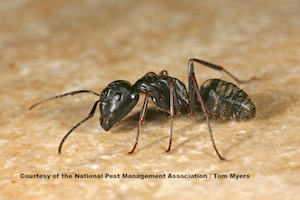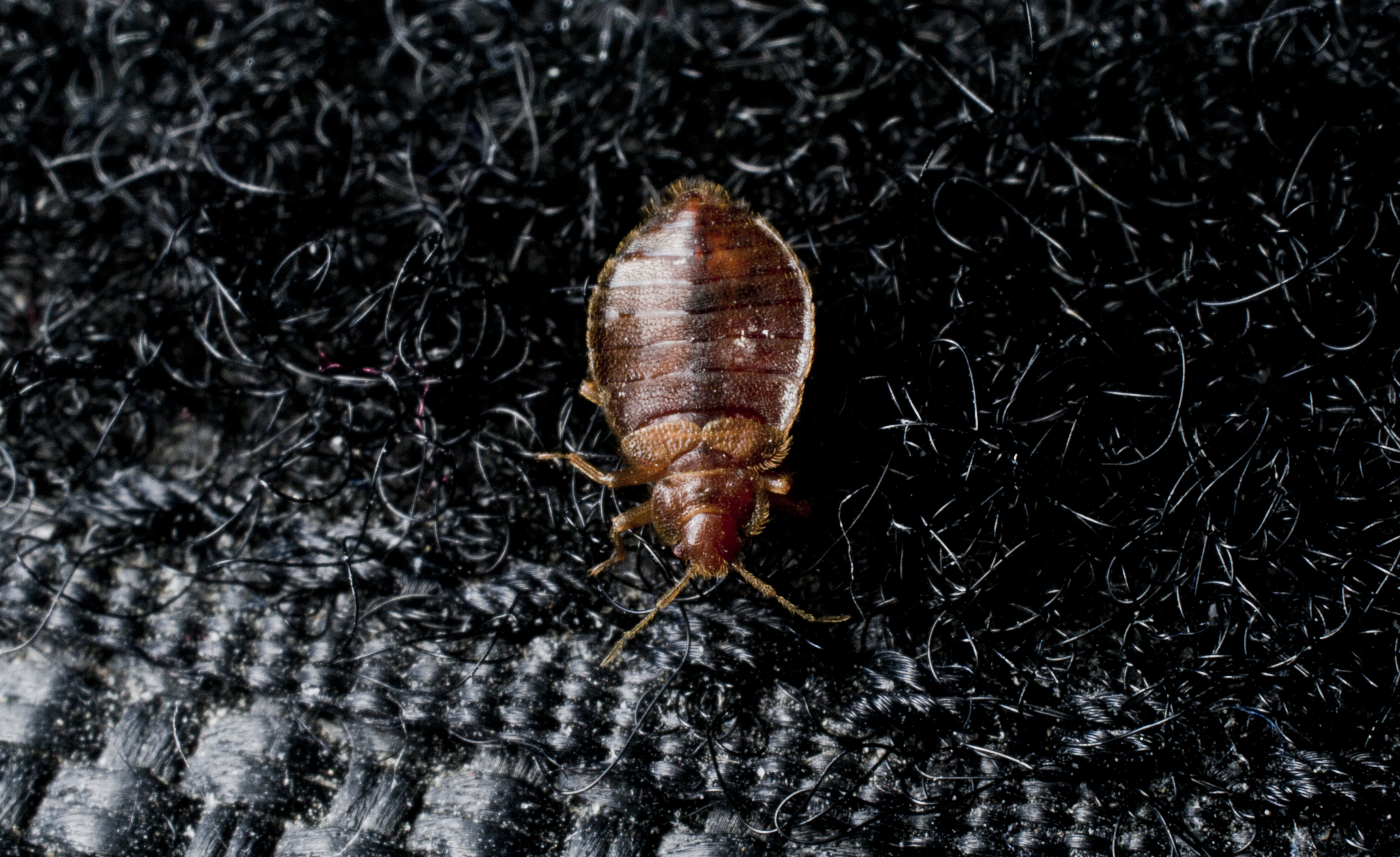Diseases Spread By Nuisance Wildlife
A Lesson in Prevention and Treatment
Whether hiking, camping, canoeing or simply taking in the wonders of nature, many people enjoy spending time outdoors all year round. However, while wondrous and beautiful, being out in nature doesn’t come without risk – especially if people come into contact with wildlife, which often carry numerous infectious diseases.
Some of these “wildlife diseases” are well known (even though they are not typically associated with wildlife) while others are less known, but all are concerning when it comes to public health.
PLAGUE
The plague or the “black death” is best known for ravaging Europe during the Middle Ages and killing more than half the population. However, the plague, while not widespread, still exists in the United States. In fact, some of the highest number of animals infected with the plague in the world are in the U.S. and is most commonly found in the southwestern parts of the country.
This infection is caused by the bacteria Yersinia pestis and is typically carried by the fleas found on rats, ground squirrels, rabbits, prairie dogs and ferrets. In fact, entire prairie dog colonies regularly are wiped out by outbreaks of plague.
In humans, the disease typically presents in two forms: bubonic and pneumonic types. The bubonic form is characterized by a bacteremia and infected lymph nodes (enlarged lymph nodes were given the Latin name bulbus– from the Greek βολβόςorbolbós –and hence the name bubonic plague). Human mortality in untreated cases of bubonic plague is 25 to 60 percent. However, the pneumonic form (pneumonic from pneumonia, or involving the lungs) is even more dangerous. The pneumonic form is characterized by an acute pneumonia and, unlike bubonic plague, is much more contagious and rapidly fatal if untreated, with 100 percent mortality within one to three days.
Veterinarians, hunters and ranchers have been killed by this disease – often as a result of handling the carcass of a dead animal or while trying to aid an injured/sick animal in which case they are inadvertently bitten by an infected flea.
Immunization and avoidance of contact with fleas or animal carcasses are the two best ways to avoid contracting this potentially life-threatening infection. Active immunization may be necessary for those people who partake in activities that increase their exposure to wild animals and live in areas where the plague is common. Additionally, avoiding contact with fleas and wild animals is highly recommended. Hunters should use special precautions in transporting dead animals.
RABIES
Unfortunately, like the plague, rabies is also not uncommon in the United States. The vast majority of rabies cases occur in wild animals like raccoons, skunks, bats, and foxes. Transmission occurs from bite wounds or any other situation where infected saliva gets in cuts or skin abrasions (hence the common name for rabies“Bite Wound Disease”). However, rabies can be transmitted through aerosol transmission - breathing the air in areas where infected animals reside, such as inside bat caves.
In wild animals, changes in behavior could come as a result of a rabies infection. Odd behaviors such as a lack of fear of humans or seeing typically nocturnal animals out during the day could be cause for concern. While domestic animals once formed the largest reservoir for the disease, since the 1960's, wildlife species have become the leading carriers of rabies.
The disease is caused by the rabies virus (Rhabdovirus), which infects the central nervous system, the brain and ultimately causing death. The early symptoms of rabies in people are similar to that of many other illnesses, including fever, headache, and general weakness or discomfort. As the disease progresses more symptoms appear such as anxiety, confusion, paralysis, agitation, hallucinations, hypersalivation (increase in saliva), difficulty swallowing, and hydrophobia (fear of water). Death usually occurs within days of the onset of these symptoms.
Unfortunately, once rabies disease has developed there is no treatment and for practical purposes rabies is still considered 100 percent fatal. Thus, early preventive measures remain the only way to guarantee survival after a bite by a rabid animal. Waiting for symptoms to begin is a death sentence.
Again, immunization and contact avoidance are the two best ways to prevent contracting this fatal infection. People who regularly work with wildlife should be vaccinated against rabies. Otherwise, the best protection for people and their pets is to avoid being bitten. In case of a bite from a wild mammal, it’s important to seek immediate medical care because rapid treatment with rabies immunoglobulin (antibodies) and vaccination can block the infection before it takes hold.
HANTAVIRUS
Unlike the plague or rabies, which have been well recognized for many centuries, Hantavirus has only recently become recognized. The name hantavirusis derived from the Hantan River area in South Korea, related to an outbreak of Korean Hemorrhagic Fever among American and Korean soldiers during the Korean War (1951-1953). This was later found to be caused by a relatively newly discovered genus of viruses: Hantaan virus. Still more recently, Hantavirus infections were finally recognized in the United States. In 1993, an outbreak of Hantavirus pulmonary syndrome occurred in the Four Corners region in the southwestern United States (leading to the original name "Four Corners disease”). The viral cause of the disease was found only weeks later and was called the Sin Nombre virus ("Virus sin nombre", Spanish for "nameless virus")
In the United States, deer mice (along with cotton rats and rice rats in the southeastern states and the white-footed mouse in the Northeast) are the vectors of the virus. These rodents shed the virus in their urine, droppings, and saliva. The infection is transmitted to people when they breathe air contaminated with the virus which occurs when fresh rodent urine, droppings, or nesting materials are stirred up and their particles become airborne.
The virus can also be transmitted through bites from infected mice, albeit this transmission is less common. Researchers also believe that people may be able to contract the virus after touching something that has been contaminated with rodent urine, droppings, or saliva and then touching their nose or mouth; or if they eat food contaminated by urine, droppings, or saliva from an infected rodent.
Early onset of Hantavirus infection is nonspecific and includes flu-like symptoms such as fever, cough, muscle aches, headache and fatigue. However, the life threatening form of infection, Hantavirus pulmonary syndrome, is characterized by a sudden onset of shortness of breath with rapidly evolving pulmonary distress that can be fatal in half the cases despite intensive care and mechanical ventilation.
Anyone who comes into contact with rodents that carry Hantavirus is at risk for infection. Rodent infestations in and around the home, and structures in more rural areas such as cabins or barns as well as campgrounds, put people at risk of Hantavirus exposure.
However, prevention and control is the primary strategy for avoiding contact with infected rodents. People who live in areas where Hantavirus is common should contact a licensed pest professional to outline the best prevention plan and elimination techniques in case of an infestation.
TULAREMIA
Tularemia, also known as “Rabbit Fever” as it is commonly transmitted during the rabbit skinning process, is caused by the bacteria Francisella tularensis.
Humans can become infected not only through contact with infected animals or carcasses, but also as a result of the bite of infected ticks, deer flies, and other insects. Transmission is also possible through the inhalation of airborne bacteria and ingestion of infected food or water. In the summer, most cases come from infected tick bites. In the winter, cases are reported by hunters who trap and skin infected animals. Landscape workers have also been identified as a segment of the population who is at an increased risk for tularemia infections. Person-to-person transmission of tularemia does not occur.
The clinical manifestations, or symptoms, of Francisella infection may range from asymptomatic illness to septic shock and death, in part depending on the virulence of the infecting strain, portal of entry, inoculums (amount of bacteria a person is exposed to) and the immune status of the host. A common type of tularemia is ulceroglandular tularemia, which normally results from the bite of infected ticks, or contact between broken skin and F. tularensis(such as the blood of an infected animal when a hunter skins a rabbit). A more rare and severe form of the disease, pneumonic tularemia, is caused by inhalation of the bacteria.
Immediate treatment with the appropriate antibiotics is recommended, as Tularemia can be fatal if left untreated.
Tularemia is found across the United States, but most cases are in Missouri, Arkansas, South Dakota and Oklahoma.
Symptoms often appear abruptly three to five days after infection, but can take as long as two to three weeks to appear. While a fever is the most common symptom, others include joint pain, chills, loss of appetite, and malaise. Infected people may experience swollen lymph nodes, headache, chills, dry cough, sore throat and ulcers at the site of infection, sore eyes, weakness and diarrhea.
There are several forms of tularemia, each specific to a particular route of entry byF. tularensis into the body. Ulceroglandular tularemia is the most common form of the disease and is accompanied by flu-like symptoms, ulcers at the site of infection, and swollen lymph nodes.
Inhalation of the bacteria leads to pneumonic tularemia, the most severe form of the disease. Pneumonic tularemia is characterized by non-specific respiratory symptoms including hemorrhagic inflammation of the lungs and bronchopneumonia. This, in addition to low suspicion of tularemia (due to its relatively low occurrence), makes it challenging for physicians to correctly diagnose isolated cases.
Diagnosis is made on a combination of suspicious signs and symptoms, followed by laboratory confirmatory testing. Treatment typically requires intramuscular or intravenous antibiotic therapy for 10 days.
Although these wildlife diseases are dangerous and pose a significant risk to humans, they are not a reason to stop enjoying the great outdoors. By following a few simple precautions, humans can safely interact with wildlife and keep any health dangers at bay.

Learn About Ants
Ants are a common pest homeowners struggle to eradicate. Learn more about them!

Bed Bug Pest Guide
Traveling for the holidays this year? Be sure to keep an eye out for bed bugs! Use our Pest Guide to help identify this pest.

NPMA's What Grows There? Project
Check out NPMA's What Grows There? project to learn how pests, such as flies, cockroaches and rodents, can spread germs throughout a home.
Find a PEST PRO in your area

Learn About Ants
Ants are a common pest homeowners struggle to eradicate. Learn more about them!

Bed Bug Pest Guide
Traveling for the holidays this year? Be sure to keep an eye out for bed bugs! Use our Pest Guide to help identify this pest.

NPMA's What Grows There? Project
Check out NPMA's What Grows There? project to learn how pests, such as flies, cockroaches and rodents, can spread germs throughout a home.
